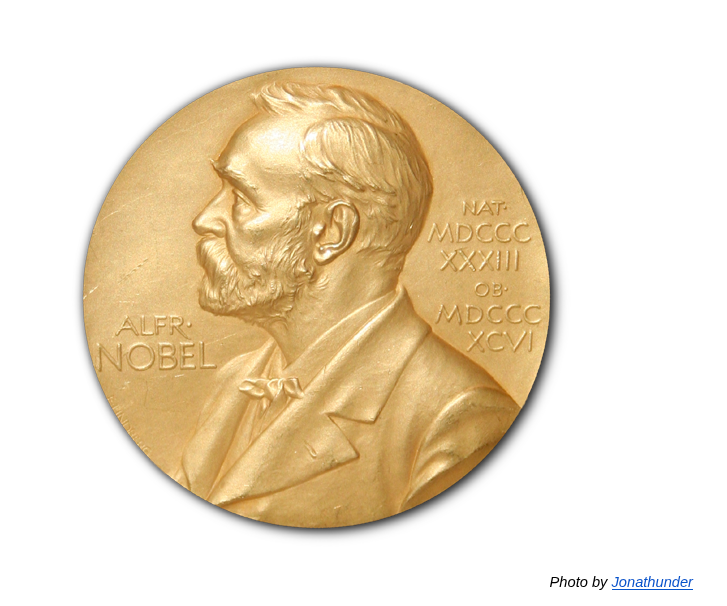
TRIZ: A Russian Tool for Innovation That The Corporate World Ruined
In 1946, Genrikh Altshuller was working in the inventions-inspection department of the Caspian Sea flotilla of the Soviet Navy. As he reviewed countless patents, a question started to nag at him: What makes inventions inventive?
For the next ten years, interrupted by a gulag sentence from 1950–53 for political reasons, Altshuller dedicated himself to answering this question. And thus was TRIZ born. It was perhaps the best and the worst thing to happen to innovation.
TRIZ (which stands for Teoriya Resheniya Izobretatelskikh Zadach, or the Theory of Inventive Problem Solving) was one of the most substantial attempts to formalize and analyze the process and psychology of innovation. And then the corporate world got their hands on it.
Many titans of corporate innovation—Samsung, Boeing, HP, IBM, and more—have utilized TRIZ methods in their processes. They have even done so successfully, but somewhere along the way, as TRIZ was institutionalized, it was also bastardized. It transformed into something unrecognizable—a tool not of creativity but rigidity.
TRIZ can still be valuable, as long as you use it properly, so let’s look closer at what TRIZ is and how to best utilize it to support your innovation efforts.
The Origins of TRIZ: A Study of Contradictions
To understand what TRIZ is, we must consider both what it started as and what it has since morphed into.
Altshuller’s first paper on TRIZ, co-written with Raphael Shapiro, was “On the Psychology of Inventive Creation,” published in 1956 in Issues of Psychology. At the time, the available research on creativity was limited, and with this paper, Altshuller began to demystify the black box that was innovation.
In this paper, he described what is really the core of TRIZ: the idea that every technical problem is a contradiction. You want to make something stronger—but also lighter. You want a battery to last longer—but charge faster. You want to speed up a process—but keep it safe.
He gave the bicycle as an example. The first commercially successful bicycle was Karl Drais’s “running machine” in 1817. The year prior, there had been widespread crop failure, leading to the starvation and death of many horses. This inspired Drais to set about finding an alternative mode of transportation.
The running machine had a seat, wheels, and handlebars and was propelled by one’s feet. Drais had successfully solved the issue of starvation. However, there was a contradiction: the running machine could not starve, but because of that, it did not have the speed or ease of riding a horse. This contradiction led to a new innovation: pedals.
The pedals let riders go faster, but in solving one contradiction, a new one emerged: with an increase in speed, operating the bicycle became more dangerous. Again, the contradiction provided new opportunities to innovate, leading to the invention of brakes.
TRIZ sees these contradictions not as dead ends, but as springboards for innovation. As Altshuller said, “The elimination of the contradiction is an invention.”
The Evolution of TRIZ: An Algorithm for Eliminating Contradictions
The key finding that set TRIZ apart from other approaches was the idea that innovation is often a repurposing as opposed to a fully new creation. “In many cases, the technical contradictions that we encounter while carrying out creative work have direct analogies in nature and technology,” Altshuller said. “Therefore, it is advisable that the first step we take is an investigation of similar contradictions and typical ways to eliminate them.”
Essentially, TRIZ proposes that someone (or some animal, plant, etc.) has already solved a version of your problem. Your job as an innovator is to find and adapt that solution—not to reinvent the wheel. This is a solid approach and one that we often use at PCDworks.
So where did things go wrong? It started, in my opinion, with the 40 principles of invention and the contradiction matrix.
The 40 principles of invention are known solutions to problems, like segmentation (divide an object into parts; e.g., modular furniture), nested doll (place one object inside another; e.g., extending radio antenna), and mechanical vibration (make an object oscillate or vibrate; e.g., electric toothbrush).
The contradiction matrix lays out in a table 39 parameters you will find in technical solutions or systems, like speed, temperature, reliability, ease of repair, and so on. Once you identify your contradiction—let’s say you want to improve “speed” while maintaining the “weight of moving object”—you can go to that cell in the table and find which principles of invention to use, based on how such a contradiction has been solved in the past. (In this example, the suggested solutions would be “taking out,” “mechanics substitution,” “the other way round,” and “strong oxidants.”)
Essentially, TRIZ morphed into an algorithm for innovation. Maybe that sounds great to you. Just run your finger along a table and find your solution. It’s like a shortcut for innovation. Who doesn’t want that? Well, spoiler: this algorithmic shortcut will lead you astray more often than it will lead you to innovation.
The Problem with TRIZ: A Mindset Turned into a Checklist
TRIZ began as a way to think about innovation. But some people are allergic to thinking. As soon as they get their grubby fingers on a cool idea, they start institutionalizing it, turning it into a formula. They do this because it’s a lot easier to sell people a formula than it is to sell them a way of thinking. This is the problem with modern-day TRIZ. What was meant to be a mindset has been reduced to a formulaic checklist.
TRIZ was initially developed by analyzing thousands of patents and real inventions. It is a reverse-engineering of the creative process. It identifies what these inventors did to innovate, but the way TRIZ has been institutionalized today, it fails to properly show how these innovators innovated.
Here is the crux of the matter: Not a single one of those inventors used TRIZ in the creation of their innovations. They were not able to successfully invent because they were using the principles of TRIZ, but because they had the right mindset for innovation. TRIZ was an attempt to describe and formalize this mindset. As soon as you isolate the principles from the mindset, you corrupt them. TRIZ works only when it is ingrained. If the way you’re using TRIZ is to go to a contradiction matrix to come up with solutions, you’ve lost the point. You’re boxing yourself into a prescribed set of solutions instead of looking to the real world for inspiration as intended.
While I largely blame corporations for what TRIZ has become, Altshuller himself played a large role. In 1984, roughly thirty years after he first established TRIZ, he published Creativity as an Exact Science, in which he proposed an “algorithm for the solution of inventive problems.”
In the introduction, he said, “When talking about their work, scientists and inventors spoke with a striking unanimity about sudden enlightenment, the impossibility not only of controlling the creative process, but also of understanding what it is and how it comes about.” Altshuller “disbelieved them immediately without argument.” I, however, think that an argument is warranted. Altshuller, as valuable as his contributions are, was not an innovator. When you are an observer, on the outside looking in, there are some things you necessarily miss (especially when you so wholly and, in my opinion, stupidly disavow the opinions of the very people you seek to understand).
TRIZ can be a useful tool, but it must be paired with the wisdom that innovation is not an algorithm and cannot be completely controlled.
A Mindset Shift
As a checklist of step-by-step directions, TRIZ borders on snake oil. However, as a mindset, it is invaluable.
Think of Triz not as an algorithm but as a way of thinking about the world. Challenge yourself to identify the contradictions and search for solutions in unexpected places. But don’t let TRIZ replace your own judgment and imagination.

